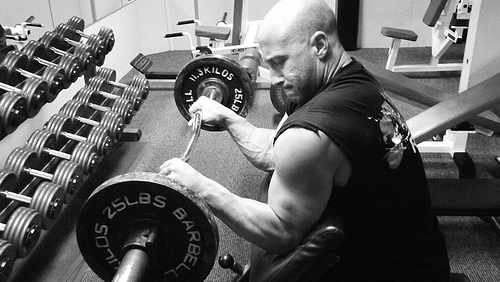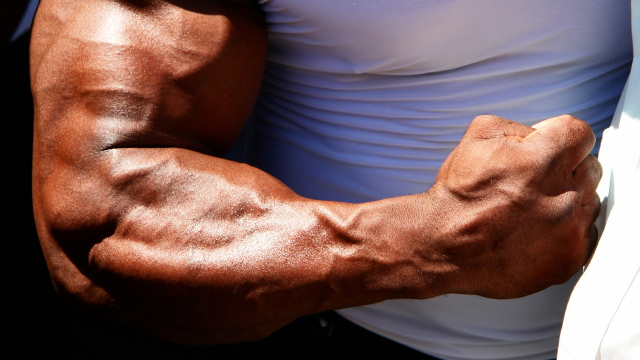Why you should improve your forearms
Note: If you are viewing exercise videos on a mobile device, please switch to horizontal view for the best experience.
Many bodybuilders neglect forearm training and later they suffer, because their grip is weak and they have to use straps for heavy exercises and they can’t lift as much weight as possible. On top of that their forearms are looking weak and out of proportion. Big powerlifters always tell you that they don’t really train forearms, because it’s useless – they grow when they do heavy deadlifts. So they don’t recommend it for bodybuilders either. While it’s true to small extent, it will never build you thick, vascular and striated forearms.
Forearm training is actually quite simple. This muscle group mainly consists of slow twitching fibers and they are very thick and dense. That means, just like with calves, you will need to put a lot of intensity into your forearm training, because forearms are completely unresponsive to light exercises. But, gladly, you don’t need to set aside so much time for forearms as with calves.
Your main weapons will be:
- Supersets
- Trisets
- Dropsets
Since you need to focus on your flexors and extensors, you don’t need a huge variety. Stick to the basic exercises like wrist curl and reverse wrist curl. You can do them seated, standing and on Preacher bench. For better definition in forearm muscles you can use something fancier. For example, you can start your triset with reverse barbell wrist curls, then do seated barbell wrist curls and finish it with standing forearm rotation*.
*Here is how to do standing forearm rotation. Take light dumbbells, probably around 10 kilograms each (that depends on your physical progress – take more if 10 is too light), and start by rotating your wrists inwards and then outwards. Don’t push it too hard when rotating in/out, just find a comfortable range. One in-and-out rotation is 1 repetition. Do this exercise till failure (you must do at least 15+ reps though).
How to perform forearm exercises?
Important thing – every set, except warm-up sets, should be done till complete muscle failure. That will stimulate your slow twitch muscle fibers really well. Welcome the pain, it’s the signal you’re on the right track. When you finish your forearm workout, they should be completely swollen and tight, and of course aching.
One more thing – forearms can handle big weights, but your tendons should be ready. So if your forearm strength is growing by the day, don’t rush to put more and more weights on the bar, wrist tendons are quite vulnerable and they must be strengthened, which takes time.
When should you train your forearms?
To make it really simple, train your forearms exactly after your main training session, when they are already exhausted and pumped up. If you train them in the beginning, you will not be able to handle big weights afterwards, or perform bodyweight movements effectively.
So train them after each training session (doesn’t matter what it was – legs, back, chest, etc) up to 4 times a week, if you’re forearms are lacking. 15 minutes will be enough, if you work really hard. If your forearms are in great shape, you can do this 2 times a week, but no less, otherwise you won’t have much progress.
Of course if you have a lot of free time on your hands, you can train forearms on separate days, doing intense 20-25-minute workouts. That will help a lot, but it’s not realistic for most of us.
So start implementing these tips today and you will see the improvements soon enough!

